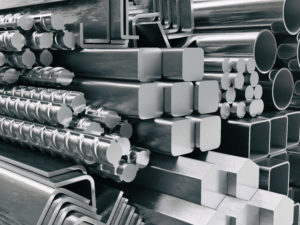Why Aluminum Alloy 2024
Is the Best Material for Aircraft

Did You Know That Aluminum 2024 is Widely Used in Aircraft Structures?
Aluminum or aluminum alloys are strong corrosion-resistant materials. These alloys have sensitivity to high temperatures that range from 200 to 250 degrees Celsius, earning themselves the description, good low-temperature alloys. Their strength increases upon exposure to subzero temperatures and strength is diminished and lost upon exposure to high temperatures.
Aluminum 2024
Aluminum alloy 2024 is an aluminum alloy, the primary alloying element being copper. Its main use is in applications that require high strength to weight ratio and good resistance to fatigue. It has the property to be welded but only through friction welding.
Aluminum alloy 2024 is annealed from a heat-treated condition between 399 and 427 degrees Celsius for approximately 2 hours, after which it is slowly cooled in the furnace. Alternatively, aluminum alloy 2024 can be annealed between cold working operations at 343 degrees Celsius for 2 hours and cooled in air.
Applications
Aluminum alloy 2024 is one of the best known high-strength aluminum alloys attributed to its high strength and excellent resistance to fatigue. With such properties and characteristics, it is extensively and commonly used in the following applications:
- Aircraft structural components (wing and fuselage structures under tension)
- Aircraft fittings
- Hardware
- Truck wheels
- Parts for the transportation industry
Aluminum alloy 2024 in plate forms are used in shear webs and ribs, fuselage structures, wing tension members and other structural areas that require stiffness, fatigue performance and good strength. On the other hand, aluminum alloy 2024 in sheet forms, are used in commercial and military aircraft for fuselage skins.
Machinability and Forming
This alloy has good machining properties in the heat-treated condition and in the annealed condition. Hot forming is not allowed for this aluminum alloy 2024. Aluminum 2024 alloy is age-hardening and the heat treatment process will strengthen the alloy even more.
Properties
In general, any kind of welding is not recommended for aluminum alloy 2024 because of the resulting degradation of corrosion resistance that occurs as a result of weld heat. In the event that the alloy is welded without using inert gas, the heat treatment should be repeated. Aluminum alloy 2024 can be forged but a subsequent heat treatment is needed to retain a reasonable corrosion resistance.
| Element | Content (%) |
|---|---|
| Aluminum, Al | 93.50 |
| Copper, Cu | 4.4 |
| Magnesium, Mg | 1.5 |
| Manganese, Mn | 0.6 |
| Properties | Metric | Imperial |
|---|---|---|
| Density | 2.77 g/cm3 | 0.10007 lb/in3 |
| Melting Point | 510°C | 950°F |
| Properties | Metric | Imperial |
|---|---|---|
| Hardness, Brinell | 120 | 120 |
| Hardness, Knoop | 150 | 150 |
| Hardness, Rockwell A | 46.8 | 46.8 |
| Hardness, Rockwell B | 75 | 75 |
| Hardness, Vickers | 137 | 137 |
| Ultimate Tensile Strength | 469 MPa | 68000 psi |
| Tensile Yield Strength | 324 MPa | 47000 psi |
| Elongation at Break | 19 % | 19 % |
| Elongation at Break | 20 % | 20 % |
| Modulus of Elasticity | 73.1 GPa | 10600 ksi |
| Ultimate Bearing Strength | 814 MPa | 118000 psi |
| Bearing Yield Strength | 441 MPa | 64000 psi |
| Poisson’s Ratio | 0.33 | 0.33 |
| Fatigue Strength | 138 MPa | 20000 psi |
| Shear Modulus | 28 GPa | 4060 ksi |
| Shear Strength | 283 MPa | 41000 psi |
For more information on obtaining Aluminum 2024




